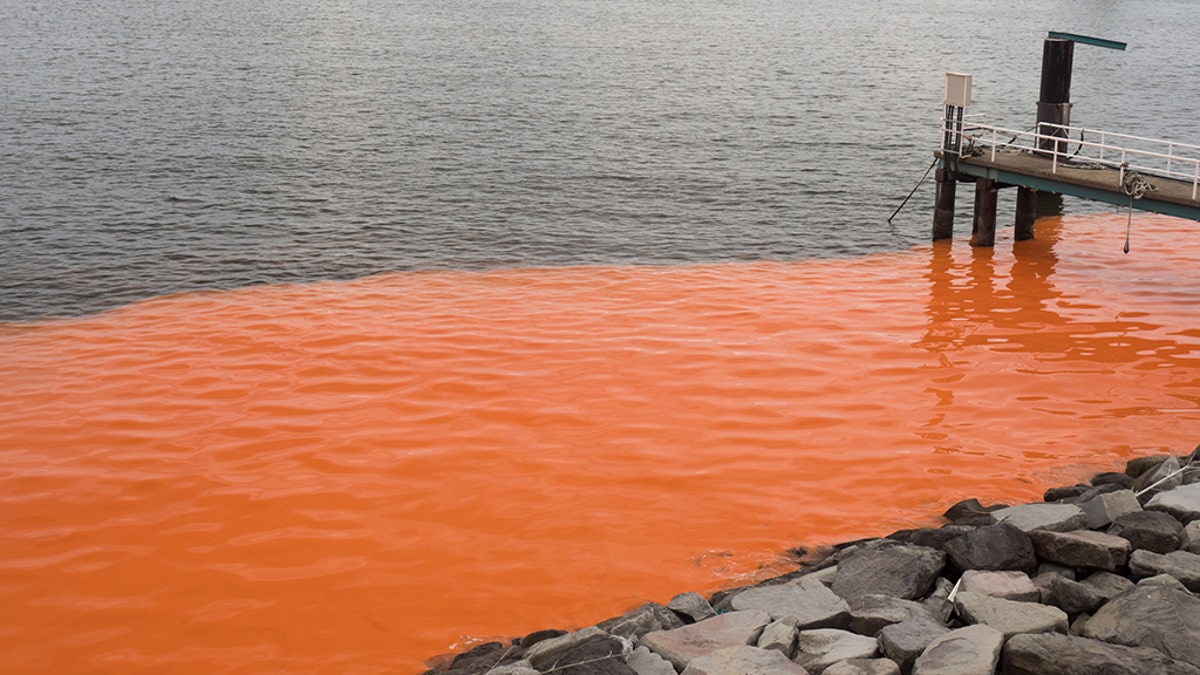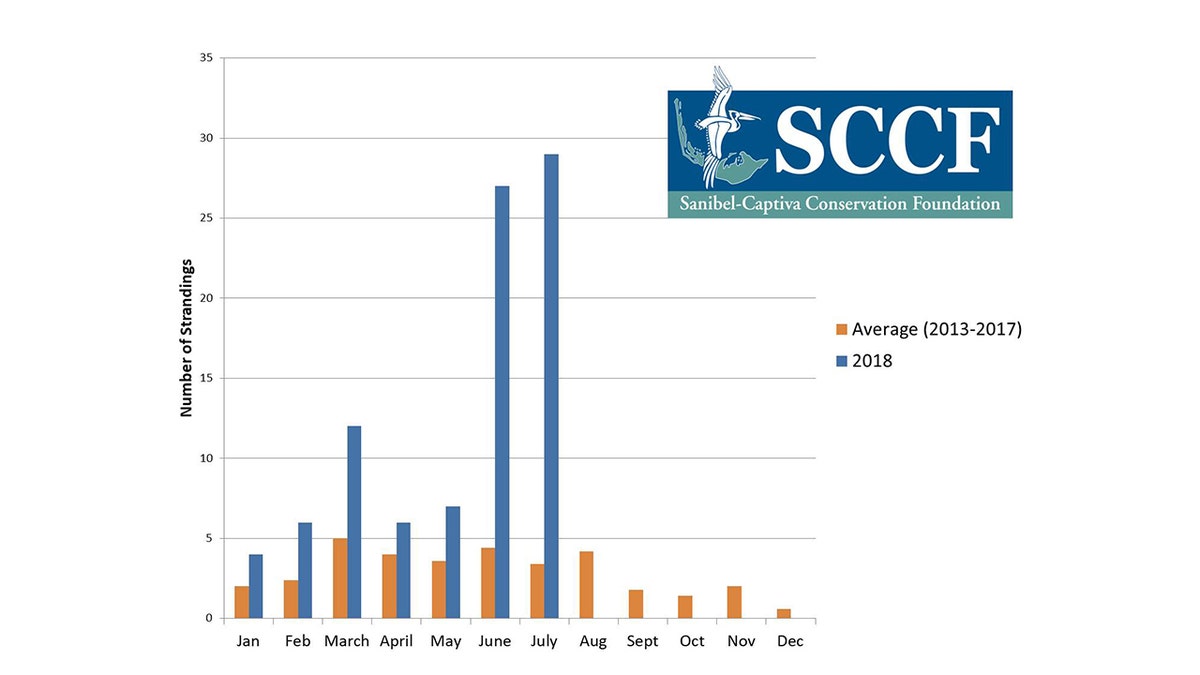
At least 19 Kemp's Ridley sea turtles -- the most endangered of the species -- have been found on the southwest Florida beaches. (National Oceanic and Atmospheric Administration)
Nearly 100 sea turtles — many of which are endangered — have washed up on southwestern Florida beaches since October. More than half of that number were dead. Marine scientists are now blaming the mass mortality on the current red tide bloom, which has been the longest, continuous bloom in more than a decade, officials said this week.
In total, 91 sea turtles have washed up on Sanibel and Captiva beaches since October 2017, 58 of which were dead, according to the Sanibel-Captiva Conservation Foundation.
And 50 of the 91 have been found on beaches in June and July alone. That’s compared to the yearly average of 30 to 35, Kelly Sloan, a sea turtle researcher at the Sanibel-Captiva Conservation Foundation on Sanibel, told the News-Press.
“It’s really disheartening,” she added.
The deaths could be a blow to a population of animals that have been fighting to make a comeback in the area, scientists warned, as many of the dead turtles have been mature adults. (Only one in 1,000 sea turtle hatchlings survive long enough to reach age 25, which is the start of reproductive maturity, according to the foundation).
FLORIDA BEACH LITTERED WITH 'HUNDREDS' OF DEAD FISH, MARINE LIFE
The Kemp's Ridley sea turtle — the most endangered of all sea turtles — represented 19 of the 91 turtles found on the beaches, according to the foundation.
"I fear this event will have an impact for years to come."
Research scientists with the Sanibel-Captiva Conservation Foundation, such as Dr. Richard Bartleson, are blaming the mass mortality on the red tide bloom, a harmful algal bloom (HAB) that occurs when “colonies of algae — simple plants that live in the sea and freshwater — grow out of control while producing toxic or harmful effects on people, fish, shellfish, marine mammals, and birds,” according to the National Ocean Service.
Bartleson is one of many scientists that has worked to collect tissue and gut samples from sea turtles that have been stranded in recent months. The samples will be tested for brevetoxins, a group of neurotoxins that can impact both humans and animals alike.
In humans, the toxins from these blooms, which are released into the air as waves crash on the beach, can have effects on the respiratory system, causing coughing and sneezing (in fact, one sea turtle expert from Collier County told the paper her voice became raspy after she was exposed to the outbreak).
For sea life, the toxin “affects the nervous system and red blood cells,” Bartleson told Fox News on Thursday.
Some sea creatures — such as fish and sharks — are impacted by toxins through their gills. When an animal breathes in, the toxins enter the body, eventually reaching the bloodstream. Sea turtles, on the other hand, do not have gills but are similarly affected through their mucus membranes or when ingesting the red tide bloom, Bartleson said.

A red tide. (iStock)
The turtles and other sea creatures, such as fish, likey don't sense the toxins when ingesting the bloom.
GEORGIA HOTEL HOUSEKEEPERS FIND SEA TURTLE HATCHLINGS IN TRASH CAN, POLICE SAY
Swimming in circles, lack of coordination, head bobbing and muscle twitching are all symptoms a sea turtle has been exposed to the red tide Karenia brevis organism, which produces the brevetoxins, according to the Florida Fish and Wildlife Conservation Commission.
While the red tide does occur naturally, Bartleson noted it has been made worse, and has been prolonged by human activities such as farming, development and manufacturing.
Over the past number of years, the build up of chemicals — such as phosphorus and nitrogen, among other elements typically found in fertilizer — have provided “the perfect nutrients” to worsen the bloom, Bartleson said. These chemicals reach the ocean through surface runoffs, which occur after a rainstorm, tropical storm or hurricane.
Bartleson said the current red tide is partly due to the surface runoffs caused by Hurricane Irma, while the red tide that affected much of the state’s central-west coast in 2005 and 2006 were worsened by the state’s active hurricane season in 2004.
In response, Bartleson, along with other scientists, have advocated for the use of the state’s wetlands to redirect the surface runoff, as the wetlands act as a natural filter.
WORLD TURTLE DAY 2018: 3 THINGS TO KNOW ABOUT THE SHELLED SPECIES
As for the sea turtles, “I fear this event will have an impact for years to come,” Heather Barron with the Center for the Rehabilitation of Wildlife veterinarian hospital on Sanibel, told the News-Press.

A graph showing the number of sea turtle strandings in recent months. (Sanibel-Captiva Conservation Foundation.)
